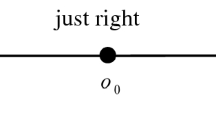Abstract
The reliable optimization of multilevel urban distribution network research helps to adapt to the changeable demand. It also can guarantee service ability of urban distribution network, so as to promote the economic development. Using the method of fuzzy reliability, series system reliability, failure rate, relative failure rate and failure function, the paper aimed at defining the key factors, the measure model and the measurement method of the reliability of urban distribution network clearly. Then, with the simulated data, the analysis of measurement model process and the application method are presented. The method can clear the level of the reliability and the weaker aspect of the urban distribution network which can provide the basis for improving the whole reliability. The paper sets up the measure model for the reliability of two-layer urban distribution network and then verify the validity of the methods. Bayesian network analysis is used to examine the influence of each factor on the reliability of the system, and the importance of each influencing factor is calculated.





Similar content being viewed by others
References
Carrabs F, Cerulli R et al (2016) An exact approach for the grocery delivery problem in urban areas. Soft Comput (published online)
Chatterjee S, Maji B (2016) A new fuzzy rule based algorithm for estimating software faults in early phase of development. Soft Comput 20:4023–4035
Choi T, Chiu C et al (2016) Risk management of logistics systems. Transp Res Part E 90:1–6
Hosseini SA, Wadbro E (2016) Connectivity reliability in uncertain networks with stability analysis. Expert Syst Appl 57:337–344
Jane C-C (2011) Performance evaluation of logistics systems under cost and reliability considerations. Transp Res Part E 47:130–137
Kim H, Kim P (2017) Reliability–redundancy allocation problem considering optimal redundancy strategy using parallel genetic algorithm. Reliab Eng Syst Saf 159:153–160
Lam CY, Ip WH (2012) An improved spanning tree approach for the reliability analysis of supply chain collaborative network. Enterp Inf Syst 6(4):405–418
Mkrtchyan L, Podofillini L et al (2016) Methods for building conditional probability tables of Bayesian belief network from limited judgment: an evaluation for human reliability application. Reliab Eng Syst Saf 151:93–112
Mokhtar EHA, Chateauneuf A et al (2016) Bayesian approach for the reliability assessment of corroded interdependent pipe networks. Int J Press Vessels Pip 148:46–58
Nahman J, Perić D (2017) Path-set based optimal planning of new urban distribution networks. Electr Power Energy Syst 85:42–49
Oliveira SC, Cobre J et al (2017) A Bayesian approach for the reliability of scientific co-authorship networks with emphasis on nodes. Soc Netw 48:110–115
Soltani-Sobh A, Heaslip K et al (2015) Estimation of road network reliability on resiliency: an uncertain based model. Int J Disaster Risk Reduct 14:536–544
Soltani-Sobh A, Heaslip K et al (2016) Evaluation of transportation network reliability during unexpected events with multiple uncertainties. Int J Disaster Risk Reduct 17:128–136
Thomas MU (2002) Supply chain reliability for contingency operations. Reliab Maintainab Symp 2002:61–67
Tran T, Bastidas-Arteaga E, Schoefs F (2016) Improved Bayesian network configurations for random variable identification of concrete chlorination models. Mater Struct 49(11):4705–4718
Van Nieuwenhuyse I, Vandaele N (2006) The impact of delivery lot splitting on delivery reliability in a two-stage supply chain. Int J Prod Econ 104(2):694–708
Xu X, Zhang W et al (2015) A bi-level programming model of resource matching for collaborative logistics network in supply uncertainty environment. J Frankl Inst 352:3873–3884
Xu X, Hao J et al (2016) Design optimization of resource combination for collaborative logistics network under uncertainty. Appl Soft Comput (article in press)
Acknowledgements
This research was sponsored by Project of National Social Science Foundation of China (15BGL202), project of Beijing Philosophy and Social Science (17GLB013), project of the planning subject of “the 12th Five Year Plan” in national science and technology for the rural development in China: demonstration of key technology and equipment for safe distribution of agricultural logistics (2015BAD18B01).
Author information
Authors and Affiliations
Corresponding author
Ethics declarations
Conflict of interest
The authors declare that they have no conflict of interest.
Additional information
Communicated by V. Loia.
Rights and permissions
About this article
Cite this article
Zhang, H., Wang, M., Tang, M. et al. The reliability measures model of multilayer urban distribution network. Soft Comput 22, 107–118 (2018). https://doi.org/10.1007/s00500-017-2900-4
Published:
Issue Date:
DOI: https://doi.org/10.1007/s00500-017-2900-4




